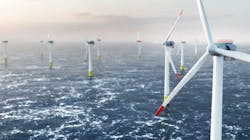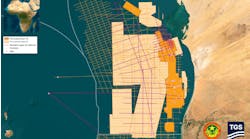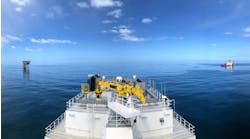Offshore staff
HAMBURG, Germany – DNV has embarked on a new joint industry project (JIP) to strengthen certainty in the design process for wind farms in regions prone to earthquakes.
ACE2 IS a follow-up to the "Alleviating Cyclone and Earthquake Challenges" (ACE) JIP and will investigate issues not covered in that project.
Topics to be addressed are geotechnical aspects such as damping and liquefaction, jackup installation vessels, details of seismic load analysis and specific Taiwanese and Japanese needs.
DNV will use the results to update its recommended practice DNV-RP-0585 Seismic design for wind power plants.
“When we look at the predictions for installed offshore wind capacity worldwide, we expect that Europe will be surpassed by Asia in the 2030s and North America in the 2040s,” said Kim Sandgaard-Mørk, executive vice president for Renewables Certification at DNV. "Especially in Asia and the US, wind turbines and offshore substations need to be designed to meet challenging conditions like earthquakes. This collaborative effort by the industry will increase the financial robustness of future wind farms in earthquake zones.”
Marcus Klose, head of Section Steel Structures at DNV, added, “It seems that one of our focus areas will be on the conditions in Japan. Japan has the sixth longest coastline in the world with ambitious government targets to install 10 GW of offshore wind by 2030. Therefore, typhoons, earthquakes and tsunami risks should be given special attention in the project design life cycle."
Companies that joined DNV in the ACE2 launch meeting were CDEE, Equinor, Jan de Nul, Kajima, Obayashi, Ørsted, Penta-Ocean, Shell, Shimizu, Siemens Gamesa, Taisei, Van Oord and Vestas.
Others can apply to come onboard until the deadline at the end of April.
In 2021, DNV published what it claimed at the time was the world’s first recommended practice to minimize cost, warranty and liability risks and optimize wind power plant design for seismic conditions in emerging wind power markets such as Asia-Pacific and the US. After 18 months of work, the ACE JIP gathered enough experiences from cross-industry players to align wind turbine design methodologies for those extreme environmental conditions, such as earthquakes.
04.27.2023



